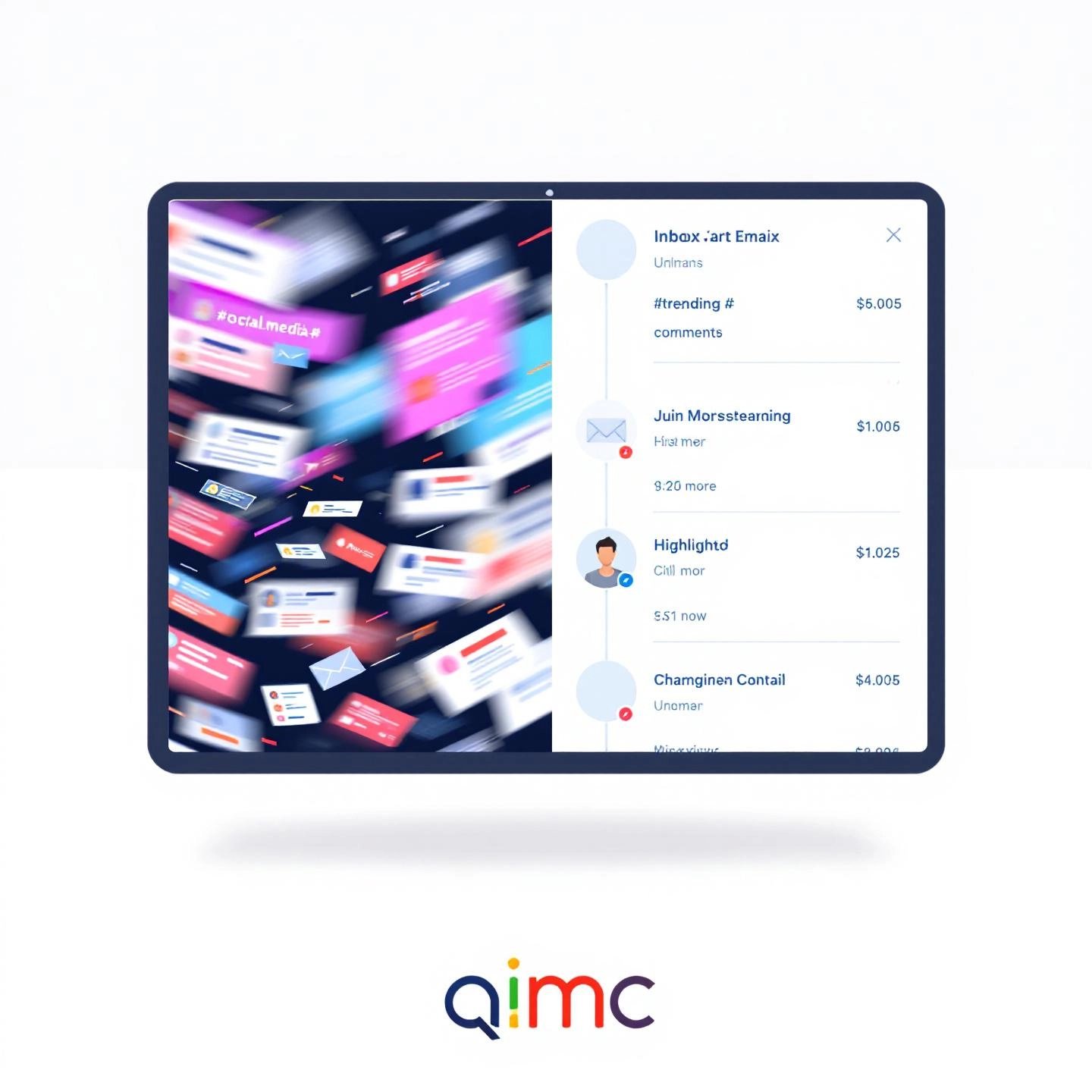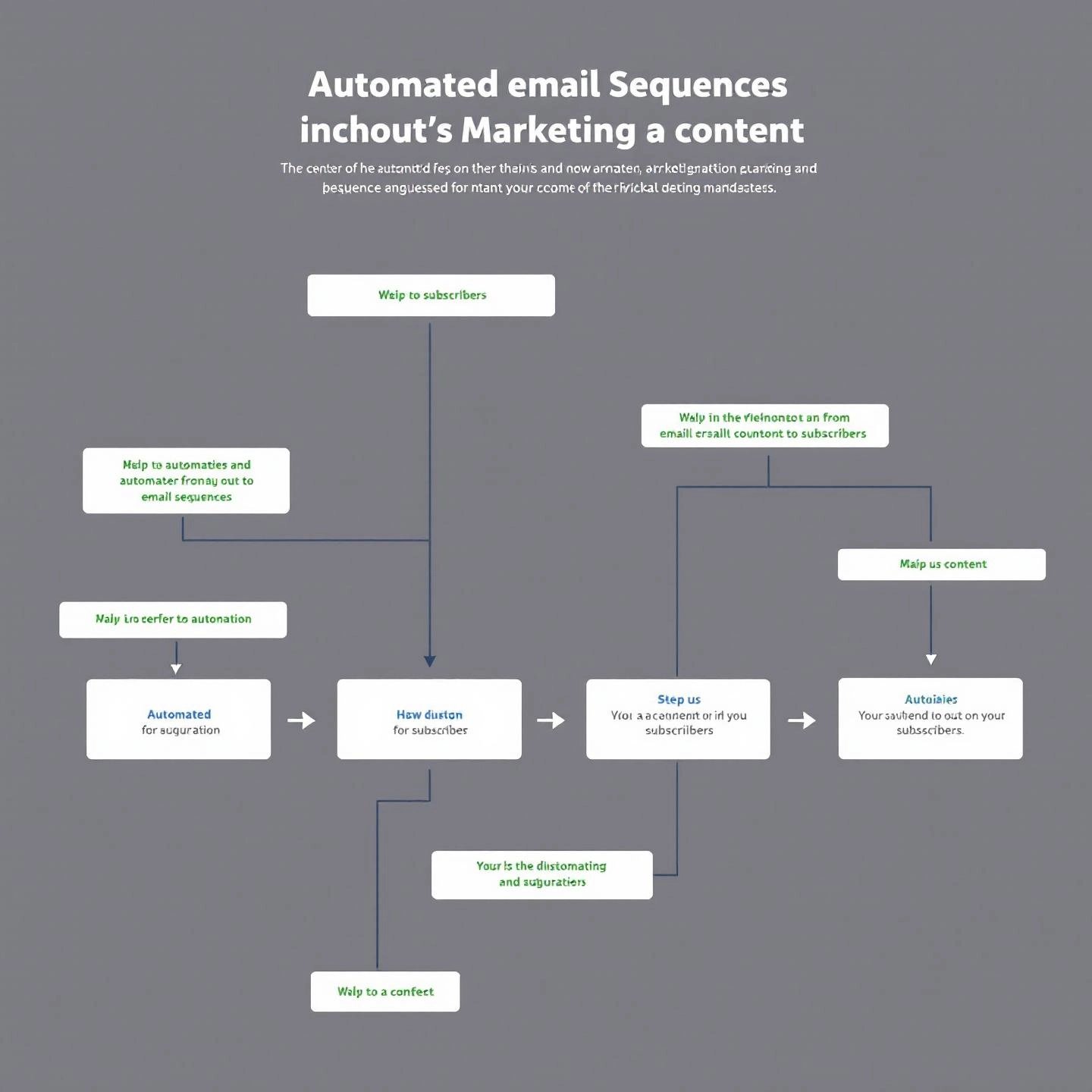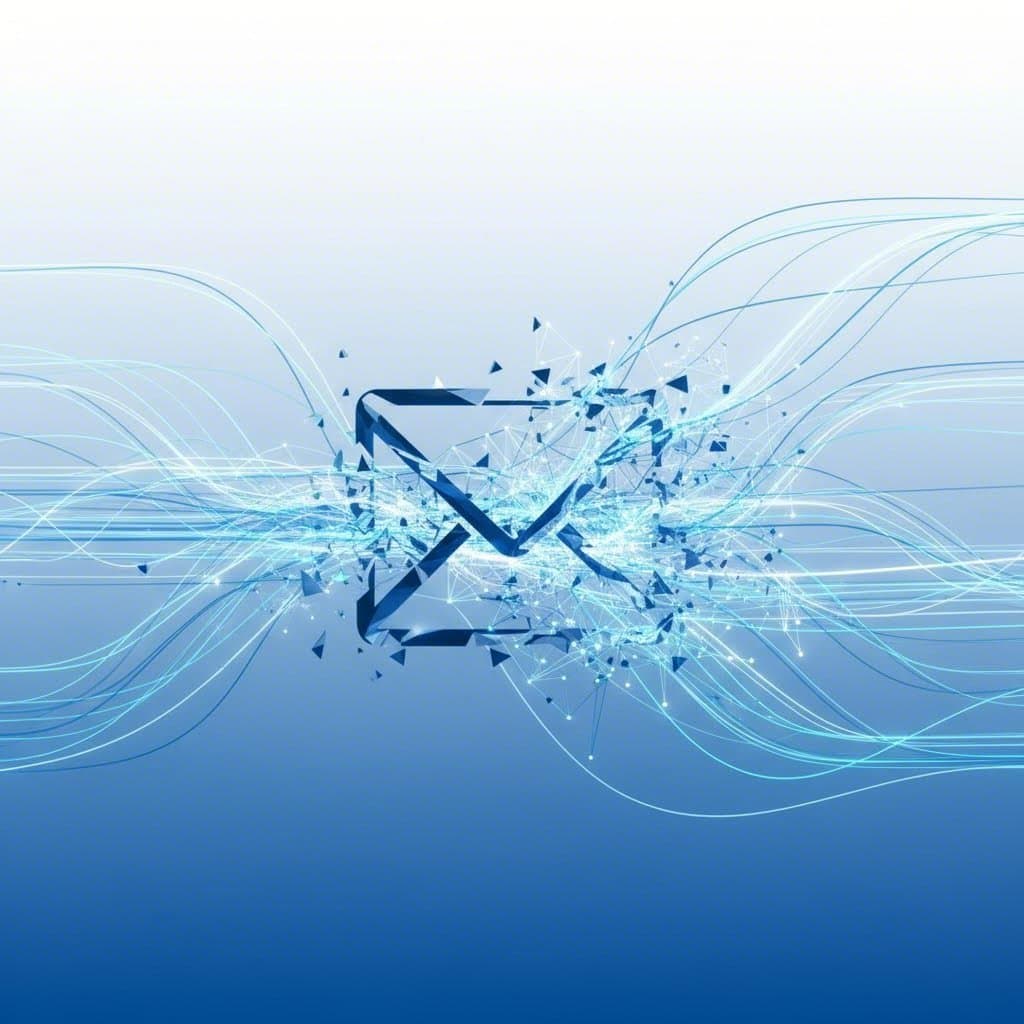Why Email Marketing for Content Distribution Matters?
Ever poured hours into crafting a blog post—only to watch it gather dust, unseen by the audience it deserves? If so, you’re not alone. Many businesses and creators face this exact frustration: great content that never reaches its full potential. That’s where email marketing for content distribution steps in as a game changer.
Instead of waiting for readers to stumble across your latest article or guide, email marketing empowers you to proactively deliver content straight to the inboxes of people who’ve already shown they care. Think of it as taking your best work off the shelf and placing it directly in the hands of those who want it most—no more relying on unpredictable algorithms or fleeting social trends.
What Is Email Marketing for Content Distribution?
Simply put, it’s the practice of using email as a core channel to share your content—blog posts, guides, case studies, videos, or newsletters—with a targeted, interested audience. Unlike social media, where your message can get lost in a crowded feed, email offers a direct, one-to-one connection. This approach is at the heart of any effective content distribution strategy because it ensures your investment in content creation actually drives results.
- Direct Delivery: Send content where your audience is most likely to see it—their inbox.
- Targeted Reach: Share content with subscribers who have opted in and shown genuine interest.
- Control & Consistency: Avoid the unpredictability of third-party platforms by owning the communication channel.
But the benefits go far beyond visibility. When you deliver valuable content directly to your subscribers:
- You build authority: Consistently sharing expertise positions your brand as a trusted resource.
- You nurture leads: Educational and relevant content keeps your audience engaged throughout their journey.
- You foster loyalty: Personalized, helpful communication creates a sense of community and strengthens relationships over time.
Why Is This Approach So Crucial?
In today’s crowded digital landscape, even the best content can go unnoticed without a strategic distribution plan. Email marketing for content distribution is not about “blasting” everyone on your list with every new post. It’s about delivering the right content to the right people—at the right time. This targeted approach not only increases engagement but also maximizes the return on your content investment (Omnisend).
Imagine the difference: instead of hoping someone finds your latest guide, you know it’s landing directly in the inbox of someone who’s interested. That’s the power of email-driven distribution—putting your content to work and ensuring your efforts translate into real business growth.

Why Email is Your Most Powerful Distribution Channel?
Ever wondered why some content seems to land right where it matters—while other pieces get lost in the digital noise? The secret often lies in the distribution channel you choose. When it comes to ensuring your content reaches its intended audience, email stands out as the most reliable and effective route.
Email vs. Social Media: The Power of Ownership
Picture this: You share a valuable guide on your company’s social media. It garners a few likes, maybe a handful of shares, but by tomorrow, it’s buried beneath a flood of new posts—out of sight and out of mind. That’s the reality of relying on social feeds, where algorithms dictate what gets seen and when. Your content’s visibility is at the mercy of external forces.
Now, imagine sending that same guide directly to your subscribers’ inboxes. No algorithms, no fleeting moments—just a direct line to people who’ve chosen to hear from you. This is the unique strength of the email distribution channel: you own the relationship, and you control the message delivery.
Owned Audience vs. Rented Audience: What’s the Difference?
Here’s a concept that’s easy to overlook but critical for sustainable growth: the difference between an owned audience and a rented audience.
- Owned Audience: These are your email subscribers—people who have opted in to hear from you directly. You’re not dependent on third-party platforms to reach them. You control the communication, the timing, and the data.
- Rented Audience: These are your followers on social media or users you reach through paid ads. While you can engage them, you don’t own the channel. If the platform changes its rules or algorithms, your reach can shrink overnight.
Think of your email list as a valuable asset—a direct, stable connection that isn’t subject to the whims of external platforms. Social media is great for discovery and engagement, but when it comes to building lasting relationships, email wins every time.
The Lasting Advantage of Email Distribution
Let’s break down why email is the backbone of a resilient content distribution strategy:
- Direct Communication: Your message lands in the inbox, not in a crowded feed.
- Algorithm-Proof: Unlike social media, email isn’t subject to ever-changing algorithms or pay-to-play models.
- Personalization: With segmentation and automation, you can tailor content to each subscriber’s interests and behaviors.
- Measurable Impact: Track open rates, clicks, and conversions to see exactly how your content performs.
- Long-Term Relationship Building: Email helps nurture leads and turn subscribers into loyal advocates.
- Cost-Effective: With a typical ROI of $42 for every $1 spent, email outperforms most other marketing channels.
In short, while social media is excellent for reaching new audiences and sparking conversations, email is where you build and maintain a community that’s truly yours. It’s the difference between renting space at someone else’s party and inviting your audience into your own home.
Ready to make the most of your owned audience? The next step is building a high-intent email list that ensures your content gets the attention—and results—it deserves.
Building Your Foundation
When you think about email list building for content distribution, do you picture a huge list of subscribers—or a smaller group that actually cares about what you share? Here’s a reality check: having thousands of email addresses means little if most of those people ignore your messages. It’s the quality of your list, not just the quantity, that determines whether your content drives real results.
Why Quality Beats Quantity Every Time?
Imagine sending your latest guide or blog post to 10,000 people, but only a handful open it. That’s a wasted opportunity—and wasted effort. Now, imagine sending that same content to 1,000 subscribers who are genuinely interested, regularly engage, and trust your expertise. You’ll notice more opens, more clicks, and more meaningful conversations.
A high-quality email list:
- Consists of subscribers who explicitly opted in to hear from you.
- Delivers better open and click-through rates.
- Builds lasting relationships—turning readers into loyal fans and customers.
- Maximizes the ROI of your content investment.
So, how do you ensure your list is full of high-intent, engaged subscribers? Let’s break down the best-practice strategies.
Actionable Strategies for Building an Engaged Email List
- Use Permission-Based Opt-ins: Always let people choose to join your list. Avoid buying lists or sneaky signups—these lead to low engagement and high unsubscribe rates.
- Implement Double Opt-In: Require new subscribers to confirm their email address. This extra step filters out bots and ensures only genuinely interested people join your list.
- Offer Value-Driven Lead Magnets: People won’t give up their email for nothing. Create relevant incentives—like exclusive guides, checklists, templates, or mini-courses—that solve a real problem for your target audience. These lead magnets for email marketing act as both a qualifier and a trust builder.
- Keep Signup Forms Simple: Ask for only essential information (usually just an email address). The more fields you add, the fewer people will complete the form.
- Strategically Place Signup Forms: Make it easy for interested readers to subscribe. Use prominent placements—headers, footers, sidebars, and at the end of blog posts—to capture attention at different stages of engagement.
- Set Clear Expectations: Tell subscribers what kind of content they’ll receive and how often. Transparency attracts people who truly want what you offer and reduces future unsubscribes.
- Engage With Welcome Emails: Start the relationship strong. Send a timely, value-packed welcome email or sequence that delivers on your promise and introduces your brand’s voice.
- Regularly Clean Your List: Remove inactive or unengaged contacts. This keeps your engagement rates high and ensures your emails land in the inbox, not the spam folder.
- Run Re-engagement Campaigns: Before deleting inactive subscribers, try to win them back with special offers or content tailored to their interests.
Building a High-Intent Email List
| Step | Why It Matters |
|---|---|
| Permission-Based Signup | Ensures your audience actually wants to receive your content. |
| Double Opt-In | Prevents fake signups and keeps your list clean. |
| Relevant Lead Magnet | Attracts subscribers who are interested in your expertise. |
| Clear Expectations | Reduces unsubscribes by aligning content with subscriber interests. |
| List Hygiene | Improves deliverability and engagement rates. |
Remember: a smaller, more engaged list will always outperform a massive, unresponsive one. Focus on attracting subscribers who are eager to receive your content and you’ll see your distribution efforts pay off in real engagement and business growth.
Once you have a strong foundation, the next step is making sure each subscriber receives content that’s actually relevant to them. That’s where smart segmentation comes in—let’s explore how to turn generic email blasts into highly personalized experiences.

Delivering Value, Not Volume
Ever felt overwhelmed by a flood of irrelevant emails? Or noticed your own subscribers ignoring your latest newsletter, even when it’s packed with great content? Here’s the problem: sending every piece of content to every subscriber isn’t just inefficient—it leads to disengagement, lower open rates, and, ultimately, unsubscribes. If you want your content distribution strategy to truly shine, it’s time to embrace email segmentation strategies for personalized content distribution.
Why Generic Email Blasts Fall Flat?
When you treat your entire email list as one big group, your messages become too broad. Imagine a skincare brand sending anti-aging tips to teenagers or a tech company promoting advanced developer guides to beginners. The result? Your content misses the mark, and subscribers tune out.
Sounds complex? It doesn’t have to be. Segmentation is simply the process of dividing your email list into smaller groups based on shared characteristics—so every subscriber gets content that’s actually relevant to them. This shift transforms your emails from generic blasts into valuable, anticipated communications.
The Power of Segmentation: Personalization at Scale
Segmentation is more than a “nice-to-have”—it’s the backbone of effective email marketing for content distribution. Here’s what you’ll notice when you start segmenting:
- Higher engagement: Segmented campaigns see a 23% higher open rate and a 27.6% increase in click-to-conversion rates compared to non-segmented ones (Omnisend).
- More revenue from fewer emails: Automated, segmented emails made up just 2% of total volume but drove 37% of all email-driven sales.
- Improved customer loyalty: Relevant, targeted content builds trust and keeps subscribers coming back.
In other words, segmentation lets you deliver value—not just volume. You’re not sending more emails; you’re sending smarter ones.
How to Segment: Finding the Right Fit for Your Audience
So, how do you start? There’s no one-size-fits-all approach. The best email segmentation strategies depend on your goals, your audience, and the data you have available. Let’s break down the most common ways to segment your list, making it easy to match your content to each subscriber’s interests.
| Segmentation Type | What It Means | Example Use Case |
|---|---|---|
| Demographic | Group by age, gender, location, or occupation | Send location-based promotions or age-specific tips |
| Behavioral | Segment by website activity, product views, or downloads | Share follow-up guides to readers who clicked on a specific topic |
| Purchase History | Target based on what and how often someone buys | Recommend related content or advanced resources to repeat buyers |
| Engagement | Filter by open/click rates or recent activity | Send re-engagement campaigns to inactive subscribers |
| Lifecycle Stage | Group by where subscribers are in their customer journey | Onboard new subscribers with welcome content; nurture leads with advanced insights |
| Geographic | Segment by country, region, or city | Promote local events or region-specific offers |
| Email Activity | Sort by frequency of opens or clicks | Reward highly engaged readers with exclusive early access |
Combining multiple criteria unlocks even deeper personalization. For example, you might target “recent buyers in California who opened your last three emails” with a special invite or a tailored content series.
Real-World Segmentation in Action
Imagine you run an online magazine. Instead of sending every article to every subscriber, you could:
- Send tech news to readers who’ve clicked on past tech stories
- Share local event guides only with subscribers in the right city
- Offer exclusive interviews to your most engaged audience
This approach makes each email feel handpicked—boosting both engagement and satisfaction.
Simple Steps for Smart Segmentation
- Start with one or two key segments: Don’t try to do it all at once. Begin with the data you already have—like location or previous engagement.
- Use your email platform’s segmentation tools: Most services offer easy ways to create and update segments as your list grows.
- Test and refine: Pay attention to which segments engage most with your content. Adjust your strategy based on real results.
Segmentation isn’t about complexity—it’s about relevance. When you deliver personalized content distribution, your subscribers feel understood and valued, and your content finally gets the attention it deserves. Next, let’s look at how to craft the perfect distribution email that turns segmented insights into real engagement.
The Anatomy of a High-Converting Distribution Email
Ever wondered why some emails drive a surge of clicks while others are ignored or deleted? The secret isn’t just in what you send, but how you send it. A high-converting email for content distribution is thoughtfully designed, sharply written, and structured for maximum engagement. Let’s break down what goes into a winning email template for content distribution—so your content doesn’t just land in the inbox, but actually gets read and acted upon.
Blueprint for an Effective Content Distribution Email
Sounds complex? It doesn’t have to be. Imagine your email as a well-organized storefront: clear signage, inviting displays, and an easy path to the checkout. Here’s a simple, proven framework to make every content email count:
- Compelling Subject Line & PreheaderThink of your subject line as the headline on a newsstand. It should be short, clear, and spark curiosity or promise value. Pair it with a preheader that teases what’s inside—giving recipients one more reason to open.Example: Subject: “5 Lessons From Our Latest Industry Guide”Preheader: “Unlock expert insights and actionable strategies inside.”
- Personalized GreetingAddressing the recipient by name instantly makes your email feel more relevant and less like a mass blast.
- Clear, Value-Driven IntroductionOpen with a short paragraph that explains why this content matters to the reader. Focus on benefits—what will they learn or gain?
- Scannable Content PreviewBreak up your main message into digestible chunks. Use headings, bullet points, or short summaries to highlight key takeaways. Most people scan before they read—make it easy for them to spot the value fast.
- Eye-Catching VisualsInclude a hero image, infographic, or relevant thumbnail to draw attention. Visuals can quickly communicate the essence of your content and entice clicks.
- Strategic Call-to-Action (CTA)Your CTA is the bridge between interest and action. Use a prominent button or link with action-oriented text (“Read the Full Guide,” “Watch Now,” “Download the Checklist”). Place your primary CTA near the top for skimmers, and again at the end for those who read through (ActiveCampaign).
- Mobile-First, Clean DesignWith most emails opened on mobile devices, use responsive templates, large tap-friendly buttons, and plenty of white space. Avoid clutter and keep text concise for easy reading on any screen.
- Personalization & Dynamic ContentGo beyond using a name. Tailor content blocks or recommendations based on previous engagement or stated preferences. For example, suggest related articles or resources based on what the subscriber has clicked before.
- Interactive ElementsBoost engagement with polls, quizzes, or clickable elements. Even a simple poll can increase click-through rates and give you valuable feedback.
- Sense of Community & Social ProofConsider adding a testimonial, a stat on how many others have read the content, or a live social feed. This builds trust and shows readers they’re part of a larger conversation (Movable Ink).
Quick Reference: Content Distribution Email Checklist
| Component | Purpose |
|---|---|
| Subject Line & Preheader | Drive opens with curiosity and clarity |
| Personalized Greeting | Increase relevance and connection |
| Value-Focused Intro | Hook readers with clear benefits |
| Scannable Layout | Make key points easy to spot |
| Visual Element | Capture attention and reinforce message |
| Primary CTA | Guide action and boost clicks |
| Mobile Optimization | Ensure usability on all devices |
| Dynamic Content | Personalize for deeper engagement |
| Interactive Feature | Encourage participation and feedback |
| Social Proof/Community | Build trust and encourage sharing |
Real-Life Example: Bringing It All Together
Imagine you’re distributing a new industry report. Your email could look like this:
- Subject: “Unlock 2024’s Top Trends—Your Industry Report Inside”
- Preheader: “See what’s shaping your field and how to stay ahead.”
- Greeting: “Hi Jordan,”
- Intro: “We’ve analyzed the latest data so you don’t have to. Discover actionable insights and expert predictions tailored for professionals like you.”
- Visual: Report cover image or infographic preview
- CTA: “Download the Full Report” (button)
- Bonus: “Join 2,000+ readers who rely on our research each month.”
By following this blueprint, you’ll transform every content distribution email into a high-converting, value-packed experience—one your subscribers look forward to. Next, let’s see how automation can help you deliver this experience consistently and at scale.

Email Automation for Content Distribution
Ever wondered how some brands seem to deliver the right content at the perfect moment—without missing a beat? The secret isn’t superhuman effort; it’s email automation for content distribution. Automation lets you move beyond manual sending, so your content always reaches the right people, at the right time, with minimal effort. Sounds complex? Let’s break it down and see how you can put your distribution strategy on autopilot.
Why Automation Is Essential for Modern Content Distribution?
When you’re juggling multiple blog posts, guides, and campaigns, sending every email manually just isn’t sustainable. Automation solves this by letting you:
- Save time and reduce errors: Set up workflows once, and let them run—no need to remember every send date or segment.
- Personalize at scale: Use triggers and dynamic content to tailor each message based on subscriber behavior, interests, or location.
- Maintain consistency: Ensure your content distribution stays on schedule, reinforcing your brand’s reliability.
- Nurture leads automatically: Guide new subscribers through their journey—without lifting a finger each time.
In short, automation turns your email list into a living, breathing channel—always working behind the scenes to distribute your content and build relationships.
Welcome Email Workflow: Setting the Tone for Lasting Engagement
One of the most powerful ways to use automation is with a welcome email workflow. Think of it as a digital handshake: it’s your chance to make a memorable first impression, deliver value, and set expectations. Why is this so important? Because a new subscriber’s interest is at its peak right after they sign up—so striking while the iron’s hot is critical.
Let’s outline a simple but effective welcome sequence that you can automate for every new subscriber:
- Immediate Welcome and IntroductionSend this email as soon as someone joins your list. Greet them by name, thank them for subscribing, and introduce your brand’s mission or story. Set clear expectations about the kind of content they’ll receive and how often.
- Deliver on Your PromiseIf your signup offer included a lead magnet (like a guide or checklist), deliver it right away. This builds trust and shows you keep your word.
- Showcase Your Best ContentResurface popular blog posts, case studies, or resources. Many new subscribers haven’t seen your older gems—this is your chance to highlight your expertise and keep them engaged.
- Invite EngagementEncourage subscribers to reply with their interests, follow you on social media, or update their preferences. This two-way interaction increases deliverability and personalizes future emails.
- Introduce Your Community or Social ProofShare testimonials, customer stories, or stats about your community. This builds trust and helps new subscribers feel like they’re joining something valuable.
- Guide Next Steps with a Clear CTAEnd your sequence by inviting the subscriber to take a meaningful action—whether that’s reading your latest post, registering for a webinar, or exploring your product offerings.
Most effective welcome series run 4 to 6 emails over the first week, but you can adjust the cadence to fit your audience and goals.
Automating the Entire Content Journey
Automation doesn’t stop at the welcome sequence. Here are other workflows to consider for ongoing content distribution:
- Drip campaigns: Nurture leads with a series of educational emails, delivering blog posts or resources over days or weeks.
- Behavioral triggers: Send targeted content when subscribers take specific actions—like clicking a link, attending a webinar, or downloading a resource.
- Re-engagement campaigns: Automatically reach out to inactive subscribers with special offers or fresh content to win them back.
- Post-purchase follow-ups: Share tutorials, tips, or related content after a customer makes a purchase to boost satisfaction and retention.
Automation is not about “set it and forget it”—it’s about setting up smart systems that free you to focus on creating great content while ensuring every subscriber receives a tailored, timely experience. When you put your email marketing for content distribution on autopilot, you build relationships and drive results—without burning out.
Next, let’s see how to measure the impact of your automated content distribution and track the metrics that matter most for growth and ROI.
How to Measure Content Distribution Success?
Ever sent a series of well-crafted emails and wondered, “Is my content really making an impact?” If you’re relying on guesswork, you’re missing out on valuable insights that could transform your strategy. To truly measure content distribution success, you need to track the right email marketing metrics—the ones that reveal what’s working, what’s not, and where your biggest opportunities lie.
Why Metrics Matter: Turning Data Into Growth
Imagine driving with your eyes closed. That’s what it’s like to run email campaigns without monitoring performance. Tracking key metrics gives you a clear view of how your content is received, helps you optimize future campaigns, and proves the ROI of your efforts. But with so many numbers available, which ones actually matter for content distribution?
Let’s break down the essential metrics every content-focused email marketer should monitor, and why each is crucial for your distribution strategy.
| Metric | What It Measures | Why It Matters for Content Distribution |
|---|---|---|
| Delivery Rate | Percentage of emails that reach recipients’ inboxes | Ensures your content is actually arriving, not lost to bounces or spam |
| Bounce Rate | Percentage of emails that couldn’t be delivered | High bounce rates often signal list quality issues or technical problems; keeping this low protects your sender reputation |
| Open Rate | Percentage of delivered emails that are opened | Indicates subject line effectiveness and initial engagement—your first sign that content is grabbing attention |
| Click-Through Rate (CTR) | Percentage of recipients who clicked a link in your email | Shows how many people are engaging with your content and taking the next step; a core measure of content relevance |
| Conversion Rate | Percentage of recipients who completed a desired action (e.g., download, signup) | Reveals how effectively your content drives real results—whether that’s resource downloads, registrations, or sales |
| List Growth Rate | Net increase in subscribers over time | Highlights how well your content and distribution strategy attract and retain a growing, engaged audience |
| Unsubscribe Rate | Percentage of recipients who opt out after receiving your email | Helps you spot if content or frequency is missing the mark; sudden spikes signal a need for adjustment |
| Spam Complaint Rate | Percentage of recipients marking your email as spam | Critical for sender reputation; high rates can land your emails in spam folders and hurt deliverability |
How to Use Metrics for Continuous Improvement?
Tracking numbers is just the first step. The real value comes from interpreting the data and acting on it. Here’s how to turn metrics into better results:
- Spot Trends: Are open rates dropping? Test new subject lines or sending times. Is CTR low? Revisit your content’s relevance or CTA placement.
- Segment Your Analysis: Break down metrics by audience segment, content type, or campaign. You might find that certain topics perform better with specific groups.
- Test and Optimize: Use A/B testing to experiment with email copy, design, and calls to action. Let the data guide your decisions, not just intuition.
- Monitor List Health: Regularly review bounce, unsubscribe, and complaint rates. A healthy list is essential for long-term content distribution success.
- Connect to Business Goals: Don’t just chase high numbers—tie your metrics back to your overall objectives, like lead generation, event signups, or product sales.
Common Pitfalls: What to Watch Out For?
- Focusing on Vanity Metrics: High open rates look great, but if no one clicks or converts, your content isn’t driving real value.
- Neglecting List Quality: A growing list means little if it’s full of unengaged or irrelevant contacts. Prioritize engagement over size.
- Ignoring Negative Signals: Rising unsubscribe or spam rates are early warning signs. Address them quickly by refining your content or targeting.
By tracking and acting on the right email marketing metrics, you’ll gain a deeper understanding of what resonates with your audience and how to continually improve your content distribution strategy. Ready to see the bigger picture? In the next section, we’ll tie it all together and show how integrating creation and distribution unlocks the full potential of your content.

Integrate Email Marketing with Content Strategy for Maximum Growth
Ever felt like you’re investing countless hours and resources into creating high-quality blog posts, guides, or videos, only to see them underperform? You’re not alone. The truth is, exceptional content is only half of the equation. Without a thoughtful approach to content creation and distribution, even your best work can go unnoticed. So, what’s the missing link between effort and impact? It’s the seamless integration of email marketing with your overall content strategy.
Why Creation and Distribution Go Hand-in-Hand?
Imagine building a world-class product but never telling anyone about it. The same principle applies to content: creation and distribution must be inseparable. Here’s why:
- Content creation builds your authority, educates your audience, and showcases your expertise—but only if it reaches the right people.
- Email marketing for content distribution ensures your message is delivered directly to those interested, bypassing crowded social feeds and unreliable algorithms.
- When you integrate email marketing with content strategy, you maximize the ROI on every piece you publish, driving real business growth instead of hoping for organic discovery alone.
Think about it: Quality attracts, but targeted delivery converts. By uniting these strengths, you create a virtuous cycle—high-value content draws subscribers, and a well-nurtured email audience amplifies every new asset you produce.
Building a Unified Growth Engine
So, how do you put this unified approach into practice? Here’s a simple roadmap:
- Set Clear Goals: Define what success looks like for both content creation and distribution. Is it driving traffic, leads, or sales? Set measurable KPIs before you start (Fujisan Marketing).
- Collaborate Across Teams: Ensure your content creators and email marketers work together. Share calendars, campaign plans, and audience insights for a more cohesive strategy.
- Measure and Optimize: Use email analytics to learn what resonates. Feed these insights back into your content planning, so each new piece is even more relevant and impactful.
- Keep Quality at the Core: Never sacrifice substance for speed or SEO tricks. High-quality, visually appealing content earns trust and keeps subscribers engaged.
Let BlogSpark Power Your Content Creation—So You Can Focus on Distribution
Trying to juggle both content creation and distribution often leads to burnout or inconsistent results. That’s where an expert solution like BlogSpark comes in. BlogSpark’s AI-driven platform streamlines every step of content creation—from keyword research and SEO-focused outlines to polished, brand-aligned drafts. You get more time to focus on what matters most: building relationships and distributing your content through high-impact email marketing.
- Save hours on research and writing—publish more, without sacrificing quality.
- Ensure every post is optimized for search visibility and audience engagement.
- Free your team to nurture your email list, refine segmentation, and experiment with new distribution strategies.
By letting BlogSpark handle the heavy lifting of content creation, you can devote your energy to leveraging that content—delivering it to the right audience, at the right time, through the most effective channel: email.
Make Distribution the Key to Growth
In today’s competitive digital landscape, content creation and distribution are two sides of the same coin. Don’t let your best work go unseen. Instead, adopt a unified approach—where every blog post, guide, or video is not just created, but actively delivered to an engaged audience. With the right tools and strategy, you’ll turn every piece of content into a growth engine for your business.
Ready to unlock the full potential of your content? Start by integrating your email marketing with your content strategy—and let solutions like BlogSpark help you scale, so you can focus on building deeper connections and driving real results.
Frequently Asked Questions
1. What is content marketing in email marketing?
Content marketing in email marketing involves sharing valuable resources like articles, guides, or videos directly with subscribers. This approach helps attract, educate, and retain a defined audience by delivering relevant content straight to their inbox, ensuring your message stands out from the crowded digital landscape.
2. What are the best email marketing strategies for content creators?
Top strategies include building a high-intent email list, segmenting subscribers for personalized content, using automation workflows for timely delivery, and tracking key metrics for continuous improvement. Leveraging tools like BlogSpark can streamline content creation, allowing creators to focus on effective distribution.
3. How does segmentation improve email content distribution?
Segmentation divides your email list into targeted groups based on factors like interests, behaviors, or location. This ensures subscribers receive content that matches their needs, resulting in higher open rates, increased engagement, and stronger audience loyalty.
4. Which metrics matter most when measuring email content distribution success?
Key metrics include open rate, click-through rate, conversion rate, delivery rate, and unsubscribe rate. Monitoring these helps you understand what resonates with your audience and optimize your strategy for better results.
5. How can automation workflows boost content distribution efficiency?
Automation workflows, such as welcome sequences and drip campaigns, ensure subscribers receive timely and relevant content without manual effort. This consistency enhances engagement and allows you to scale your content distribution effectively.




